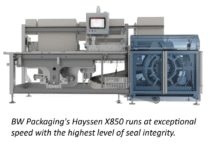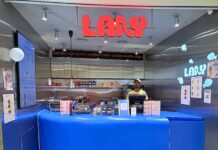In the Asia-Pacific (APAC) region, major economies like China, Japan and South Korea contribute to about 25% of the world’s food waste while other South and Southeast Asian regions together account for 22% of the world’s food waste. Against this backdrop, the packaging and end-product suppliers are planning to address these food losses and waste by using nanotechnology to extend the shelf life of food products, says Global Data.
According to GlobalData, the sustainable development goals call for halving per capita global food waste at retail and consumer levels by 2030, as well as reducing food losses along the production and supply chains. The APAC is the largest consumer of packaged food with a recorded volume of 372.03 billion kg in 2019.
Albin George, senior consumer analyst at GlobalData, says, “The market for packaged food in the APAC is expected to see a short-term decline given the uncertainty in the consumption patterns owing to Covid-19, which has resulted in production capacity and lead times constraints. Moving past the pandemic, the resurgence is expected in the consumption of packaged food products in the region, primarily owing to the increasing population, which is estimated to reach nearly 10 billion by 2050.
“Minimizing food loss and waste, and economical utilization of resources will be the major challenges that packaging and end-product suppliers will be tasked with. Nano-technology based packaging materials can extend the shelf life of food products further by acting as a more protective barrier against environmental factors.”
A major challenge in tackling food loss and waste is the effective use of food resources by enabling transportation to regions with food-scarcity. This, however, is not possible due to the low shelf-life of the majority of food items, which is what manufacturers or packaging suppliers are aiming to address by using nanotechnology.
Nano-tech enabled packaging can help companies in reducing permeability to oxygen and water vapor, and offer a better protective barrier against other environmental factors, consequently extending shelf lives even further. Intelligent packaging will also aid in tracking other key attributes of the food contents such as packaging integrity, temperature, or expiration date, during shipping and storage.
George concludes, “Food packaging is a more evolved field of nanotechnology application, which is evident through increasing demand for such technology-based solutions, where brands like NanoMax, Polyone, and Valentis are steadily gaining a foothold.”
IndiFoodBev — authentic, impactful and influential
An English-language food and beverage processing and packaging industry B2B platform in print and web, IndiFoodBev is in its third year of publication. It is said that the Indian food and beverage industries represent approximately US$ 900 billion in revenues which implies more than 20% of the country’s GDP. Eliminating the wastage on the farmside can help to deliver more protein to a higher number of the population apart from generating sizable exports. The savings in soil, seeds, water, fertilizer, energy and ultimately food and nutrition could be the most immense contribution that country is poised to make to the moderation of climate change.
To improve your marketing and grow sales to the food and beverage processing and packaging industry, talk to us. Our research and consulting company IppStar [www.ippstar.org] can assess your potential and addressable markets in light of the competition. We can discuss marketing, communication, and sales strategies for market entry and growth.
Suppliers and service providers with a strategy and budget for targeted marketing can discuss using our hybrid print, web, video, and social media channels to create brand recognition linked to market relevance. Our technical writers are ready to meet you and your customers for content.
The second largest producer of fruit and vegetables in the world is continuously expanding processing capacities and delivery systems with appropriate innovative technologies. We cover product and consumer trends, nutrition, processing, research, equipment and packaging from farm to thali. Get our 2025 media kit and recalibrate your role in this dynamic market. Enhance your visibility and relevance to existing markets and turn potential customers into conversations. Ask for a sample copy of our bi-monthly in print or our weekly IndiFoodBev eZine each Wednesday.
For editorial info@ippgroup.in — for advertisement ads1@ippgroup.in and for subscriptions subscription@ippgroup.in
Naresh Khanna – 10 February 2025
Subscribe Now












